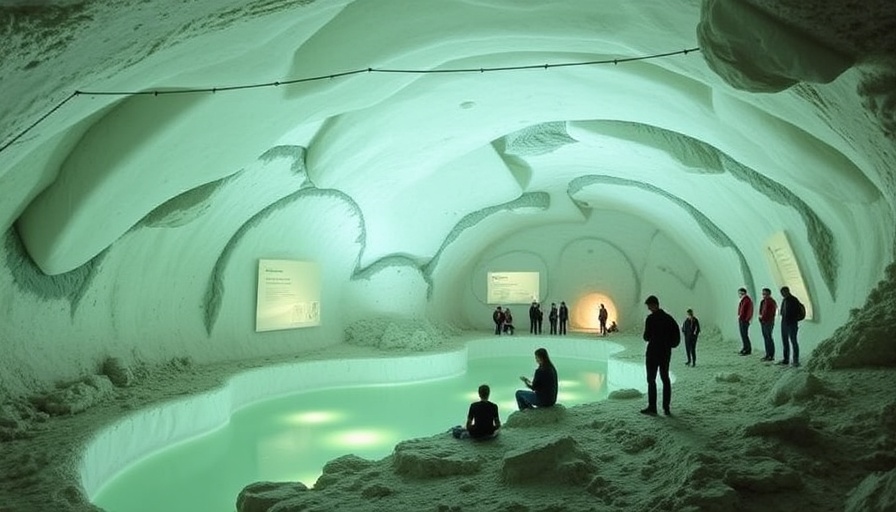
Transforming Salt Mines: Innovation Meets Sustainability
In a remarkable initiative, YACademy students are reimagining old salt mines in Sicily as vibrant spaces that merge nature, architecture, and community. With their innovative projects aimed at reviving disused sites, these aspiring architects are creating places that not only serve practical purposes but also promote sustainability and cultural enrichment. Their proposals frame a vision for what once were barren landscapes, breathing new life into them and elevating them to become centers of activity and creativity.
A Bridge between History and Modern Design
The projects designed by students at YACademy highlight an intriguing blend of historical awareness and contemporary needs. One standout proposal, The In-Between Scape by Hadeel Ayed, Vera Glazeva, and Woranitta Sukwattanasombat, aims to redefine access to these unique environments. This design features a transitional terrain that connects the surface and underground with spaces like a sculpture garden, lecture hall, and restaurant. By weaving these areas together with vertical voids filled with light, the designers invite visitors to explore and reflect on the rich geologic and cultural history nestled in the earth's depths.
Ecological and Community Integration: The Future of S-alt City
Another intriguing project, S-alt City by Nasser Ahmed, Natalia Mariana Bianco, and Davide Filipi, takes on the ambitious task of refreshing the post-industrial landscape. This proposal envisions a system where architecture, infrastructure, and public life intermingle seamlessly. It incorporates modular units and elevated pathways that reinterpret the salt basins, marrying ecological awareness with human activities. By focusing on memory, environmental resilience, and adaptive planning, this project represents a dynamic framework for ongoing transformation in response to changing community needs.
Enhancing Community Engagement through Cultural Spaces
Perhaps one of the most engaging approaches comes from The Salt Venue by Stefano Campagna, Zexi Li, Pedro Paes Morais, and Catherine Scalzi. This transformation of the salt mine into a cultural park emphasizes community engagement through exhibitions and performances. The hybrid landscape designed here reflects a strong commitment to merging memory with modern utility, offering places for both indoor and outdoor festivities. This long-term strategy for evolving the site strengthens community ties and enhances the social fabric through shared experiences.
Creating Comfortable and Efficient Workspaces in Heritage Sites
For digital nomads looking to find inspiration in such revitalized spaces, these projects serve as excellent examples of how integrating sustainable architecture into previously industrialized regions can create unique remote work environments. A well-designed workspace is essential for productivity, especially in avant-garde locations. YACademy’s proposals illustrate how one can maintain comfort and efficiency while also fostering a sense of community and culture. As remote workers increasingly seek inspiring environments to boost creativity, these newly reimagined spaces could become the optimal backdrop for work and relaxation.
The Broader Impact of Sustainable Design Initiatives
The stories behind these innovative proposals resonate deeply with current trends in sustainable design. They reflect a growing trend emphasizing the importance of environmental and social responsibility in architecture. By repurposing old salt mines, these students not only breathe new life into forgotten structures but also set a precedent for future projects that prioritize both ecological soundness and cultural relevance.
Conclusion: Why This Matters
As digital nomads or anyone interested in creating inspiring workspaces, understanding the implications of such architectural efforts can offer valuable insights into your projects and lifestyle. Whether contemplating the aesthetic appeal of a workspace or its functional layout, drawing inspiration from eco-friendly designs can lead to improved wellbeing and productivity. With every space creatively reimagined, we open doors to new possibilities.
Explore more about the innovative work by YACademy students and think about how you can apply these universally relevant design principles to your workspace, wherever it may be.
 Add Row
Add Row  Add
Add 




Write A Comment